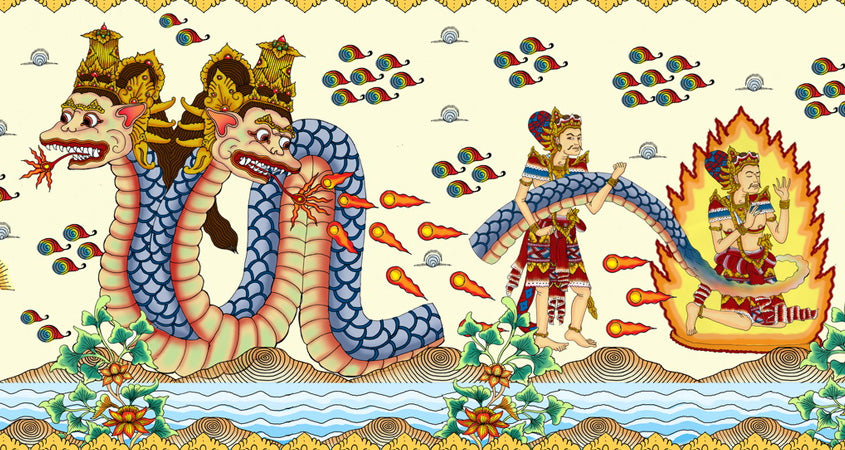Balinese paintings offer a vibrant and captivating glimpse into the island's rich mythological traditions. These artworks serve as more than mere decorations; they are visual narratives that bring ancient stories to life, preserving Bali's cultural heritage for generations to come.
The Origins of Balinese Mythological Paintings
Balinese mythological paintings have a long and storied history dating back centuries. Originally influenced by the artisans of the Majapahit Empire in the 14th century, these paintings evolved to become a unique expression of Balinese Hindu culture. The traditional Kamasan or Wayang style, originating from the village of Kamasan in East Bali, became the center of classical Balinese art from the 16th to the 20th centuries.
Key Themes and Characters
Balinese mythological paintings often depict scenes from Hindu epics like the Ramayana and Mahabharata, as well as local folklore. Some of the most prominent themes and characters include:
- Barong and Rangda: The eternal battle between good and evil, represented by the lion-like Barong and the witch Rangda.
- Dewi Danu: The goddess of water, lakes, and irrigation, central to Balinese agricultural life.
- Garuda and Vishnu: The giant bird mount of Lord Vishnu, symbolizing loyalty and devotion.
- Calon Arang: A powerful sorceress whose story teaches about the dangers of black magic.
Symbolism and Artistic Techniques
Balinese mythological paintings are rich in symbolism and employ unique artistic techniques:
- Vibrant colors: Artists use bright, natural pigments to bring mythological scenes to life.
- Intricate details: Paintings feature elaborate patterns and ornate designs, reflecting the complexity of Balinese mythology.
- Flat perspective: Unlike Western art, Balinese paintings often lack a central focal point, allowing multiple stories to unfold across the canvas.
- Spiritual proportions: The size and measurements of figures in paintings are based on spiritual principles, connecting the artwork to cosmic forces.
The Cultural Significance of Mythological Paintings
Balinese mythological paintings play a crucial role in the island's cultural and spiritual life:
- Religious function: Many paintings are used in temples and during ceremonies, serving as visual aids for spiritual teachings.
- Preservation of tradition: These artworks help maintain Bali's rich mythological heritage, passing down stories through generations.
- Moral lessons: The depicted myths often contain important moral and ethical teachings, guiding Balinese society.
- Tourist attraction: Mythological paintings have become a significant draw for cultural tourism in Bali, allowing visitors to engage with the island's spiritual traditions.
Contemporary Interpretations
While traditional styles remain popular, contemporary Balinese artists are also reinterpreting mythological themes:
- Modern techniques: Some artists incorporate Western artistic influences while maintaining traditional subject matter.
- New perspectives: Contemporary painters often explore fresh angles on classic myths, keeping the traditions relevant for modern audiences.
- Global recognition: Balinese mythological paintings have gained international acclaim, with works displayed in museums and galleries worldwide.
Balinese mythological paintings offer a fascinating journey into the island's spiritual and cultural landscape. These vibrant artworks not only preserve ancient stories but also continue to evolve, ensuring that Bali's rich mythological heritage remains alive and relevant in the modern world. Whether you're an art enthusiast, a mythology buff, or a curious traveler, exploring Balinese mythological paintings provides a unique and enriching experience that deepens one's understanding of this enchanting island's culture.

